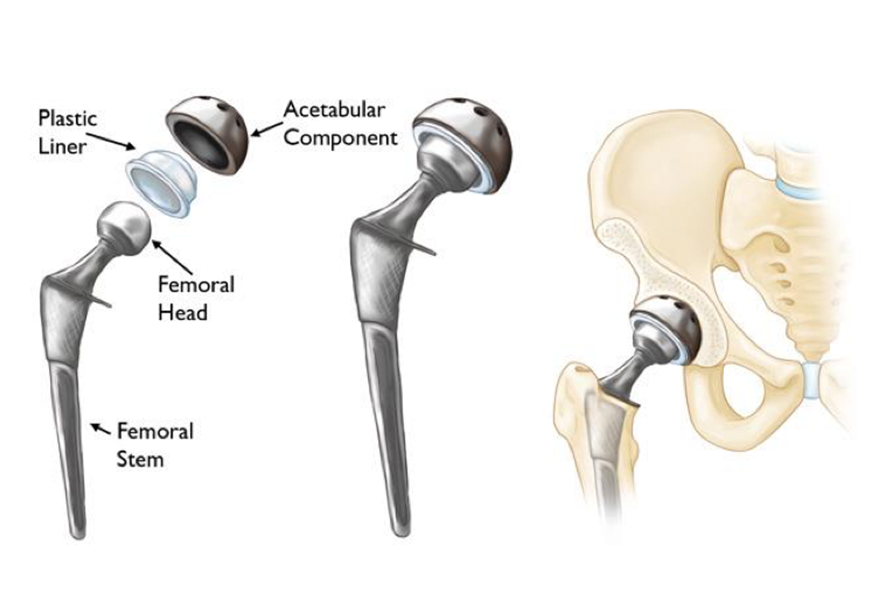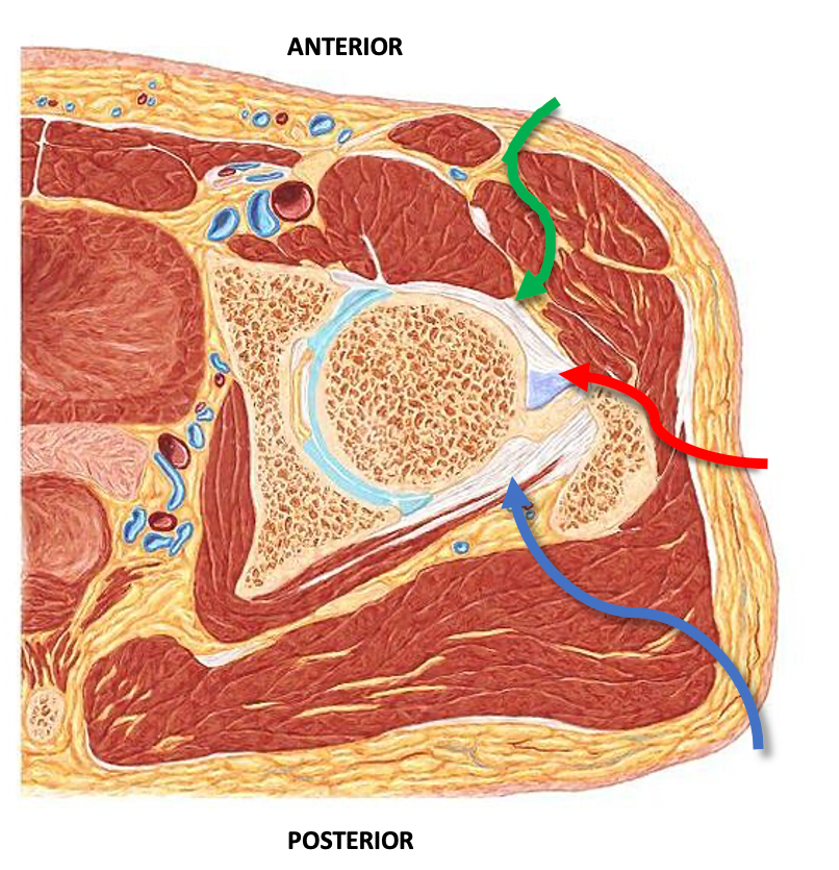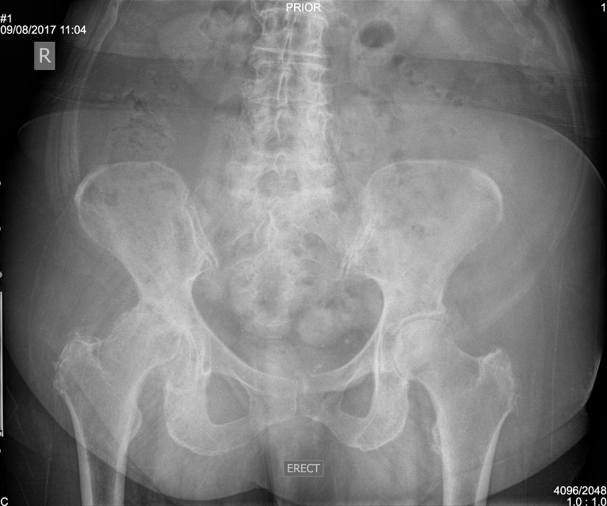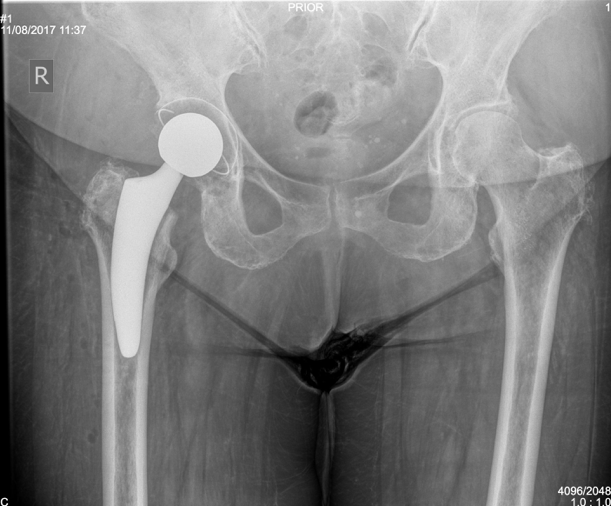Click on the links below to find out more about
Direct Anterior/Bikini Total Hip Replacement Surgery
Click on the links below to find out more about
Direct Anterior/Bikini Total Hip Replacement Surgery
OVERVIEW
The partial hip replacement procedure – also known as a hip hemiarthroplasty – involves replacing only the head at the top of the femur (the ball-shaped part of the joint) whilst leaving the acetabulum (the socket) in place.
This procedure is best suited for those who have a fractured femoral neck (NOF) while the socket is still healthy. This is the most common reason for a partial hip replacement. It’s a suitable surgery for older patients with limited activity, and those who are unsuitable candidates for a total hip replacement. READ MORE
The damaged bone is replaced by a prosthetic implant, typically composed of metal, during surgery. Replacing a hip removes the source of pain and helps increase your ability to move more freely.
Choosing a surgeon for your partial hip replacement is a big decision. But you can have peace of mind knowing Dr David Slattery has extensive experience in successful anterior and posterior hip surgeries.
Where possible, Dr Slattery opts for anterior hip replacement surgery. This involves making an incision in the front of the hip, rather than behind. The anterior technique such as in the anterior approach to a hip replacement is favoured due to the smaller incision necessary, as well as the avoidance of cutting through muscles and tendons. As a result, recovery is much faster.
A partial hip replacement procedure is a significant surgery, l and a recovery period that can last up to 6 months. The actual time it takes for you to fully recover does depend on your health and fitness before the surgery takes place.
Dr David Slattery will refer you for rehabilitation and physiotherapy to strengthen your muscles and get you walking pain-free again.
Hip surgery has come a long way in the last few decades, and Dr Slattery has trained with expert direct anterior hip replacement surgeons in both Switzerland and Australia. He has operated on patients of all ages, with a very high rate of success.
Dr Slattery is a renowned orthopaedic specialist in Melbourne, with a preference for anterior operations as this procedure reduces the amount of collateral damage to the surrounding hip area whilst reducing the overall recovery time.
Dr Slattery embraces the great innovations in modern medicine to ensure your partial hip replacement procedure goes smoothly, ad your recovery period is as short as possible. He performs a variety of surgical procedures in Melbourne and is fully equipped with all specialised tools necessary.
After extensive training with top European and Australian orthopaedic specialists, Dr Slattery has performed surgery on athletes and sports players. He has also received a fellowship at the Royal Australian College of Surgeons, and the Australian Orthopedic Association.
With merits like these, your health is in great hands when you choose Dr David Slattery as your hip replacement surgeon.
You can book a consultation appointment online, or you can also call one of the Melbourne consulting locations. READ LESS
There are normally four components to a total hip replacement:
A standard hip replacement in Australia refers to a hip replacement performed using an incision over the side of the hip with access to the hip joint from the back (posterior). It involves splitting various muscles to gain access to the hip joint. It offers excellent exposure of the hip, and is routinely done across Australia. Variations of this “standard” approach practiced by Australian surgeons are the Direct Superior Approach (DSA), and SuperPATH® hip replacement techniques, which still cut varying amounts of muscle tissue.


An anterior hip replacement is a hip replacement from the front of the hip, which involves an incision in the groin as opposed to the side. This approach for hip replacement was originally described in Europe, and has gained popularity in the United States. More recently it has gained popularity in Australia.
Dr Slattery uses either a cosmetic, or bikini, incision in the groin crease or an oblique incision which results in a small scar in the groin approximately 8-10cm long in most cases. The operation goes between muscles rather than cutting through them, which reduces the amount of trauma to the soft tissues and preserves the normal anatomy. The goals of anterior hip replacement are:
FAQs for hip replacement surgery
Should I have a hip replacement?
There are many things to consider when making a decision to undergo hip replacement surgery. It could ultimately give you relief from chronic pain and suffering, but there could also be an alternative. It is always best to be armed with plenty of questions ahead of your initial consultation with your hip replacement specialist.
What is the recovery time on an anterior hip replacement surgery?
Most patients are sitting out of bed or standing on the first day after surgery. Some patients are able to walk and can be safely discharged home in 36-72hrs. Usually patients will resume most normal activities within 3 – 6 weeks of their total hip replacement surgery. Once activity is possible with minimal pain, physical therapy and light exercise will be important to incorporate as a way to help recovery.
What are the complications with anterior hip replacement surgery?
This type of surgery is considered safe and is highly effective for patients who require it. With any surgery there can be complications and for hip surgery you may encounter the following:
Many steps are taken at each step of your operation to prevent complications occurring, and overall hip replacement is very safe and effective.
What can I expect after hip replacement surgery?
You will spend 2-3 days in hospital afterwards and be advised on how best to take care during the recovery period. Within the first few days you will be encouraged to walk with assistance from physiotherapy and nursing supports. Most patients do not need to go to inpatient rehabilitation post op unless they have significant medical co-morbidities or no supports at home.
Following surgery you will be required to avoid driving for approximately 2 weeks, possibly longer, depending on how quickly you regain confidence and coordination.
Ongoing pain from a hip replacement can be expected in the first few weeks. This should subside as your recovery time and postoperative physical therapy is undertaken.
What activities should I avoid after hip replacement surgery?
Patients should avoid driving for 2 weeks after hip replacement surgery (at a minimum). There are no other restrictions upon your activities after an anterior hip replacement.
Is hip replacement surgery safe?
Hip replacement surgery has a long proven safety record over many decades. With constant refinement techniques have become better to prevent short and long term problems. Advances in technique and materials have ensured that surgeries performed today are safer and deliver longer-lasting benefits to a greater number of patients than ever before. Dr Slattery prioritises the safety of his patients at every step of their journey to health, ensuring that the risk of complications such as blood clots and nerve damage are minimised.
How long will my new joint last after hip replacement surgery?
New, stronger artificial joints and improvements in implant delivery and placement mean that more than 85% of all hip joint implants will last 20 years without revision.


Dr Slattery is a hip replacement specialist located in Melbourne and has learnt the intricacies of Direct Anterior Total Hip Replacement surgery in both Switzerland and Australia from world leaders in this technique. Additionally, he provides hip replacement keyhole surgery (arthroscopy) where suitable for patients. He now has a number of total hip replacement consulting rooms across Melbourne.
Patient selection is extremely important in ensuring that you get the best outcome from your hip replacement surgery. Dr Slattery will assess you individually and discuss the best option for you during your consultation.
To book a consultation with Dr Slattery, a hip replacement specialist in Melbourne, please contact one of his rooms listed here, or by using our online contact form.

Dr David Slattery is an orthopaedic surgeon based in Melbourne with over 10 years of experience, with a special focus on hip and knee joint preservation and replacement. With qualifications in both medicine and law, he brings a unique and comprehensive approach to patient care. His surgical techniques are minimally invasive and evidence-based, designed to reduce pain and enhance recovery.
Trained in leading institutions across Europe and the USA, Dr Slattery offers advanced treatments for a wide range of joint conditions. He is deeply committed to patient outcomes and takes pride in tailoring treatment plans to each individual. Whether you’re an athlete or seeking relief from chronic joint pain, his goal is to restore function and improve your quality of life.